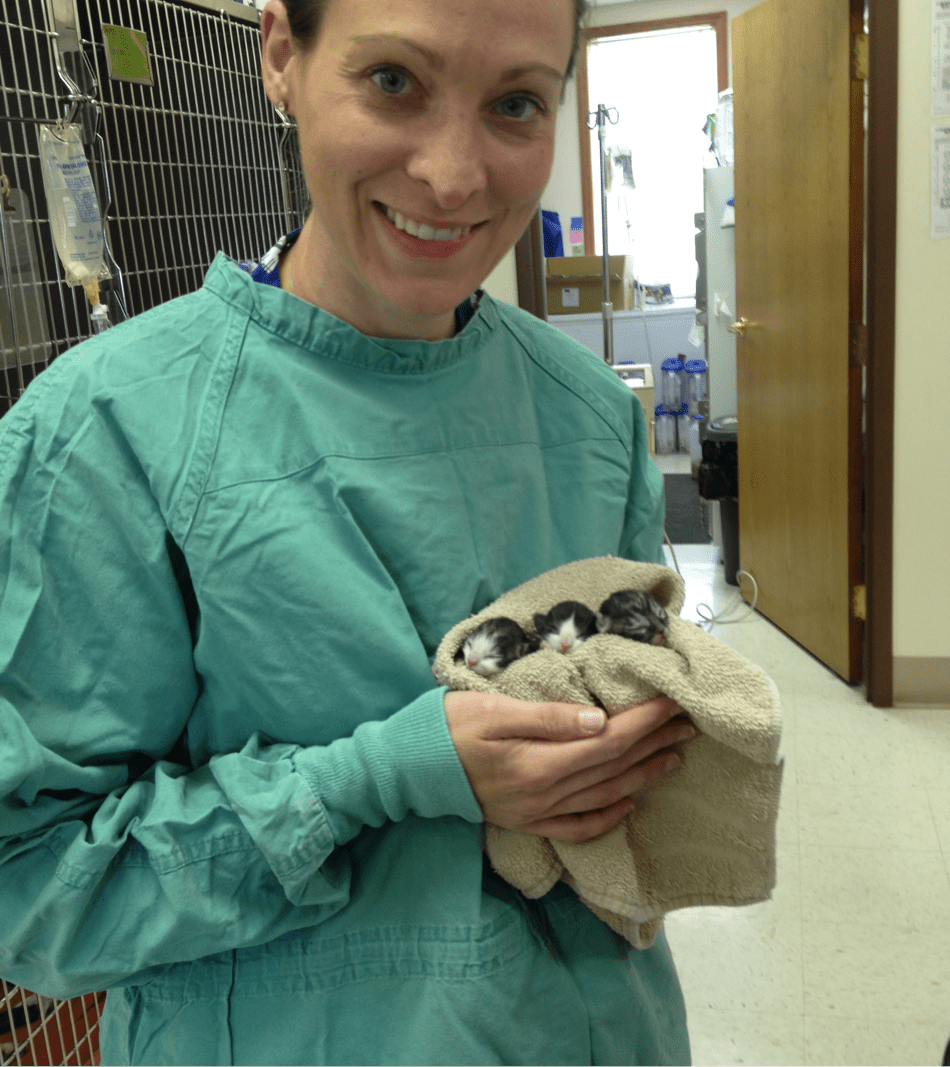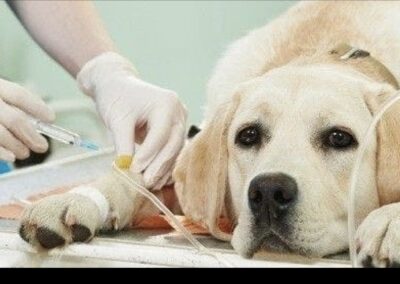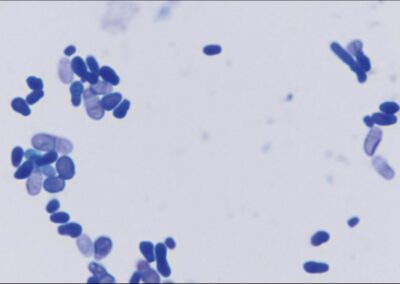With cooler weather a lot of people mistakenly think that it is ok to stop using flea and tick prevention. Even with the cooler weather fleas are still very active and we are seeing an uptick in flea infestations right now.
This can be a tricky problem and for the most part, it’s a combination of factors that include either stopping parasite prevention or having indoor pets (cats, rabbits, guinea pigs, etc.) that are not on prevention and acting as a host to continue the infestation.
Flea Life Cycle
- Eggs- Eggs are small and white. They are laid on the animals but quickly fall off into the environment. They need a warm dry environment to continue to grow…really anywhere your pet feel comfortable fleas (of all life stages) will feel comfortable.
- Larvae- These are maggot like and they feed on blood in adult flea feces, organic debris, flea eggshells and other larvae. Larvae will not develop in areas exposed to prolonged sunlight. The speed of development is dependent on temperature and humidity. Larvae like to develop in carpet, on furniture and along baseboards.
- Pupae- These look like white cocoons and can be found in soil, vegetation, carpets, under furniture, and bedding. Adult fleas emerge ~8-13 days after pupal development but they can live in the cocoon for up to 30 weeks. Mechanical stimulation (vibrations from the vacuum), increase in temperature and increase in CO2 levels can all stimulate flea emergence from the cocoon.
- Adults- Adults begin feeding immediately when on the host. Egg production begins within 20-24 hours of females taking their first blood meal. Female fleas can produce 40-50 eggs per day and adults can survive 2-3 months.

Recommendations
The Companion Animal Parasite Council currently recommends that dogs and cats be on a monthly parasite prevention all year round. If you find yourself in a position where you have an infection remember to treat ALL animals that live in the home. If you feed stray or feral cats or dogs move feeding stations away from the primary residence and treat as many of them as you can. Calling an exterminator to treat the home will help reduce the parasite load in the home but plan on at least 3 months before your home will be flea free.
Keep in mind that there is significant resistance to some over the counter flea preventatives and keep be sure to follow all instructions on products to prevent accidental toxicities. Ideally call your veterinarian for safe and effective products.
The best way to prevent infestations is to use monthly parasite preventions on all pets. We often find that the dogs in the house are on prevention but the cats are not because they do not go outside. However, fleas will come in on the dog and on people and cause an infestation.
Keep in mind that the animals in the house are not the only ones at risk when fleas are in the house. People that are bitten can develop disease too. In addition to allergic reactions to the bites there are several zoonotic diseases that can be passed from fleas to people.

 Barks & Recreation is proud to feature Dr. Eileen Savier CVA, CVCH as our Veterinary Blogger in our “From the Vet” Series — offering information related to the health and welfare of your furry family members! Currently part of the team of doctors at Keystone Veterinary Clinic, Dr. Savier is a 2012 Graduate of the Ross University School of Veterinary Medicine, She completed her clinical experience at The Ohio State University and after veterinary school she pursued further education and certification in Veterinary Acupuncture, Chinese Herbal Medicine, and Fear Free veterinary visits. Dr. Savier has a special interest in integrative medicine, animal behavior, and internal medicine and is committed to improving animal health care by integrating Eastern and Western philosophies. She enjoys working with fearful & aggressive dogs and cats and she has had additional training in low stress handling techniques and encourages positive reinforcement during exams and procedures. Her clinical interests include pain management, animal behavior, geriatric patient care, and internal medicine.
Barks & Recreation is proud to feature Dr. Eileen Savier CVA, CVCH as our Veterinary Blogger in our “From the Vet” Series — offering information related to the health and welfare of your furry family members! Currently part of the team of doctors at Keystone Veterinary Clinic, Dr. Savier is a 2012 Graduate of the Ross University School of Veterinary Medicine, She completed her clinical experience at The Ohio State University and after veterinary school she pursued further education and certification in Veterinary Acupuncture, Chinese Herbal Medicine, and Fear Free veterinary visits. Dr. Savier has a special interest in integrative medicine, animal behavior, and internal medicine and is committed to improving animal health care by integrating Eastern and Western philosophies. She enjoys working with fearful & aggressive dogs and cats and she has had additional training in low stress handling techniques and encourages positive reinforcement during exams and procedures. Her clinical interests include pain management, animal behavior, geriatric patient care, and internal medicine. Dr. Savier shares her home with two (soon to be three) dogs, two cats, and a toddler. She lovingly refers to her two dogs as Coconut Retrievers as they were rescue dogs she brought home from the island of St. Kitts. In her free time she enjoys spending time with her family, going to the beach, and planning her next Disney vacation.
Dr. Savier shares her home with two (soon to be three) dogs, two cats, and a toddler. She lovingly refers to her two dogs as Coconut Retrievers as they were rescue dogs she brought home from the island of St. Kitts. In her free time she enjoys spending time with her family, going to the beach, and planning her next Disney vacation.




